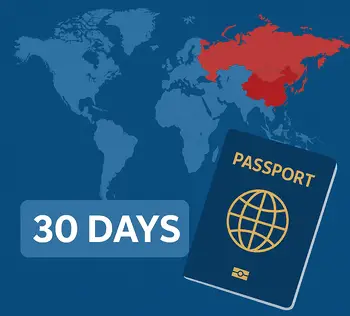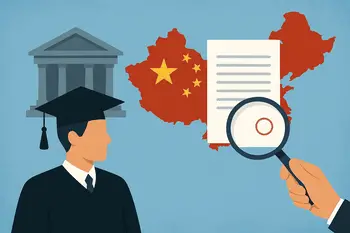
Navigating China’s vast and busy public transport systems can be an efficient and economical way to travel.
From bustling metros to extensive bus networks, public transportation is the backbone of urban life in China.
However, like in any major city worldwide, safety is paramount when using these services.
This guide provides actionable safety tips to ensure a secure and pleasant journey through China’s public transport system.
Understanding the Public Transport Landscape
China boasts one of the world’s most extensive and efficient public transportation systems.
Major cities like Beijing, Shanghai, Guangzhou, and Shenzhen have well-developed metro systems, while buses, trams, and taxis are widely available.
Here’s a quick overview of the main modes of transport:
- Metro Systems: Fast, reliable, and covering extensive areas, metro systems in cities like Beijing, Shanghai, and Guangzhou are ideal for getting around. For example, the Beijing Subway has 27 lines and over 700 stations, making it one of the largest metro systems in the world.
- Buses: Buses connect areas not serviced by the metro. They are a cheaper alternative but can be crowded and slower during peak hours.
- Taxis and Ride-Hailing Services: While more expensive, they are convenient for door-to-door service. Apps like Didi Chuxing are widely used for ride-hailing.
General Safety Tips
Regardless of the mode of transport, these general safety tips can help you stay secure:
- Plan Your Route in Advance: Use apps like Baidu Maps or MetroMan to familiarize yourself with your route before setting out. These apps provide real-time updates and route planning in English.
- Keep Your Belongings Secure: Pickpocketing can be an issue in crowded areas. Use anti-theft bags or backpacks with hidden zippers, and keep your belongings in front of you.
- Be Aware of Your Surroundings: Stay alert, especially in crowded places. Avoid distractions like excessive phone use or wearing headphones.
- Travel During Safe Hours: Avoid late-night travel if possible, especially in unfamiliar areas. Most metro systems stop running around 11:30 PM, so plan accordingly.
- Carry Emergency Contacts: Keep a list of emergency numbers, such as the local police (110) and your country’s embassy or consulate. For example, the U.S. Embassy in Beijing can be reached at +86-10-8531-4000.
Metro Safety Tips
China’s metro systems are among the busiest globally, and safety is crucial when navigating them:
- Avoid Rush Hours: Peak times (typically 7:30-9:30 AM and 5:00-7:30 PM) can be extremely crowded. If possible, travel outside these hours for a more comfortable experience.
- Stand Behind the Yellow Line: Always stand behind the yellow safety line on platforms until the train comes to a complete stop.
- Let Passengers Exit First: Allow passengers to exit before boarding to prevent congestion and ensure smoother boarding.
- Use Handrails and Straps: Trains can start and stop suddenly. Hold onto handrails or straps to avoid falling.
- Mind the Gap: Pay attention to the gap between the train and platform when boarding and alighting.
- Accessibility: Most metro stations in major cities have elevators and ramps for wheelchair users. Use apps like MetroMan to check station accessibility features.
Bus Safety Tips
Buses are a cost-effective way to travel but require extra caution:
- Use Official Stops: Always board and alight at official bus stops to avoid accidents.
- Stay Seated or Hold On: If seats are available, use them. If standing, hold onto handrails firmly to avoid falls.
- Be Cautious with Backpacks: Remove your backpack when standing to avoid obstructing the aisle or hitting other passengers.
- Prepare for Your Stop: Signal the driver early and move towards the door when your stop is approaching. Use apps like Baidu Maps to track your route in real time.
Taxi and Ride-Hailing Safety Tips
Taxis and ride-hailing services like Didi Chuxing offer more personalized transport but come with their own set of precautions:
- Use Licensed Services: Always use licensed taxis or reputable ride-hailing apps. Avoid unregistered cabs, as they may not be safe.
- Verify Vehicle Details: Check that the vehicle’s license plate, driver’s name, and photo match the details provided in the app.
- Share Your Ride Details: Inform a friend or family member of your ride details and share your location in real time using the app’s features.
- Sit in the Back Seat: For added safety, sit in the back seat and keep your seatbelt fastened.
- Avoid Discussing Personal Information: Don’t share personal details with the driver or disclose your travel plans.
Additional Safety Measures
Emergency Preparedness:
- Save emergency numbers like the police (110), ambulance (120), and fire services (119).
- Learn basic Mandarin phrases like “help” (帮助 bāngzhù) or “police” (警察 jǐngchá) to communicate in emergencies.
Stay Updated on Travel Alerts:
Check local news or apps like WeChat for updates on disruptions, protests, or safety concerns.
Health Precautions:
- Wear a mask, especially during flu season or in crowded places.
- Carry hand sanitizer and avoid touching your face after using public transport.
Digital Safety:
Avoid using public Wi-Fi networks without a VPN to protect your personal information. Keep your phone charged and carry a portable charger for emergencies.
Accessibility and Family Safety Tips
For Travelers with Disabilities:
- Use apps like MetroMan to check for elevators and accessible facilities at metro stations.
- Request assistance from station staff if needed.
For Families with Children:
- Keep children close in crowded areas and teach them basic safety rules, such as staying behind the yellow line on metro platforms.
- Use child safety harnesses or wristbands in busy areas to prevent separation.
Conclusion
Using public transport in China can be a safe and convenient way to explore the country’s vast cities.
By following these safety tips, you can ensure a smoother, more secure journey.
Always stay aware of your surroundings, secure your belongings, and be prepared for any situation.
With a bit of caution and planning, your public transport experience in China can be both enjoyable and safe.
For more information and resources, check out the following links:
Safe travels!



